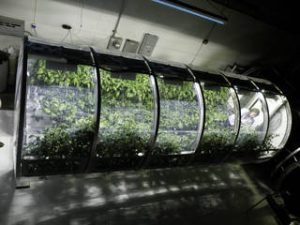Life Support Systems for the Moon
In the near term, it is not realistic to expect physical-chemical life support technologies to be entirely replaced by biological systems. However, it is undeniable that biological life support technologies incorporating higher plants and microbial communities will increasingly become mainstays of extended human space exploration missions. Canada has established world leadership in higher plant production technologies in controlled environments. Thus we are well prepared to provide technology and expertise especially in the areas of food production and atmosphere revitalization, including water recycling, to the overall scope of a biological life support system. Future activities will provide opportunities for Canadian industries and institutions to collaborate with international partners to reliably achieve the evolution of biological life support in space through incremental advances in technology and expertise. By incrementally improving the efficiency or ‘closure’ of the system, the life support system will increasingly minimize the mass of food, water, and oxygen re-supply thereby freeing payload space for other technologies.

A prototype bioregenerative life support system being developed for lunar greenhouses. Team at the University of Arizona working to make food production possible and sustainable on the Moon.
Credit: University of Arizona
The roadmap for the evolution and deployment of appropriate technologies for biological life support requirements has been recently submitted to the CSA and is currently under discussion by a number of groups in Canada. It includes terrestrial analog studies in harsh environments as well as continued technology developments in hypobaric plant growth studies, atmosphere management and recycling protocols for nutrient solutions. The work depends extensively on industry collaborations among greenhouse and aerospace sectors. The commercial terrestrial spin-offs associated with this research and technology development agenda are very important to sustaining the initiative and will continue to provide drivers and rationale for many space science objectives.
.
